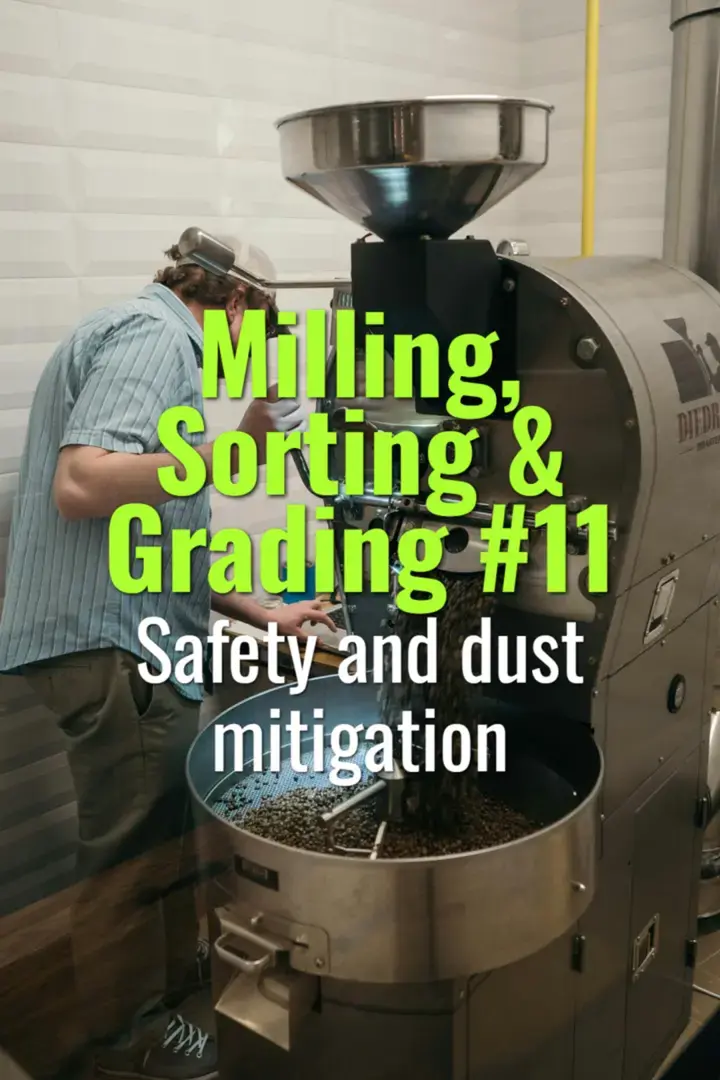Safety and dust mitigation
This topic explains the safety risks in coffee milling facilities, particularly dust-related hazards, and outlines best practices for protecting workers, equipment, and product quality.
- Coffee Basics Nerds
- 2 min read
Article 11 of 12 in Milling, Sorting & Grading/

Why Safety & Dust Mitigation Matter
- Milling generates coffee dust, husks, and chaff.
- Risks include:
- Worker respiratory health issues (allergies, asthma).
- Dust explosions in enclosed areas.
- Contamination of beans and facilities.
Health Risks for Workers
- Prolonged dust exposure → respiratory problems.
- Eye and skin irritation.
- Noise hazards from machinery.
Dust Explosion Hazards
- Fine organic dust is highly flammable.
- Sparks, static electricity, or overheating equipment can trigger explosions.
- Enclosed mills without ventilation are especially vulnerable.
Mitigation Strategies
Worker Safety
- Provide PPE: masks/respirators, goggles, gloves, ear protection.
- Train workers on safe machine operation and hazard awareness.
Dust Control
- Install dust extraction systems and filters.
- Regular cleaning schedules for machinery and floors.
- Use sealed conveyors to reduce airborne particles.
- Ensure proper warehouse ventilation.
Fire & Explosion Prevention
- Ground machinery to prevent static buildup.
- Maintain fire extinguishers and sprinklers.
- Separate electrical systems from high-dust zones.
Quality Impacts
- Excess dust contaminates beans, reducing cleanliness.
- Poor sanitation can increase microbial contamination.
- Buyers demand compliance with food safety standards.
Regulatory & Certification Compliance
- OSHA and international labor standards emphasize dust control.
- Certifications (e.g., ISO, Rainforest Alliance) may require documented safety protocols.
Best Practices
- Combine PPE with mechanical dust extraction.
- Implement safety audits and hazard reporting systems.
- Educate workers on long-term health risks.
Lasting Importance
Safety and dust mitigation in milling are non-negotiable for both worker welfare and coffee quality. Proper systems protect people, prevent catastrophic accidents, and ensure that coffee meets international food safety and specialty market standards.